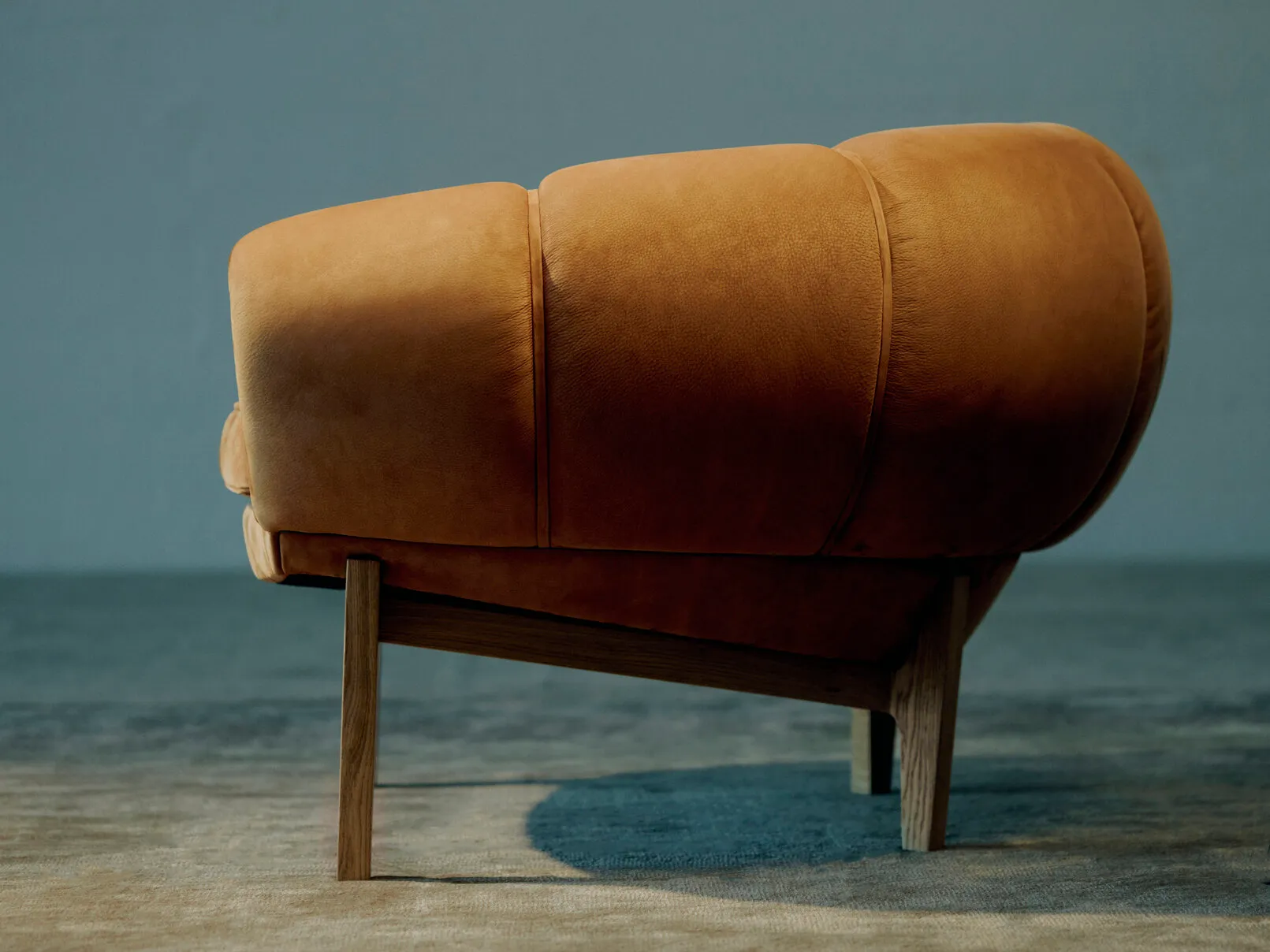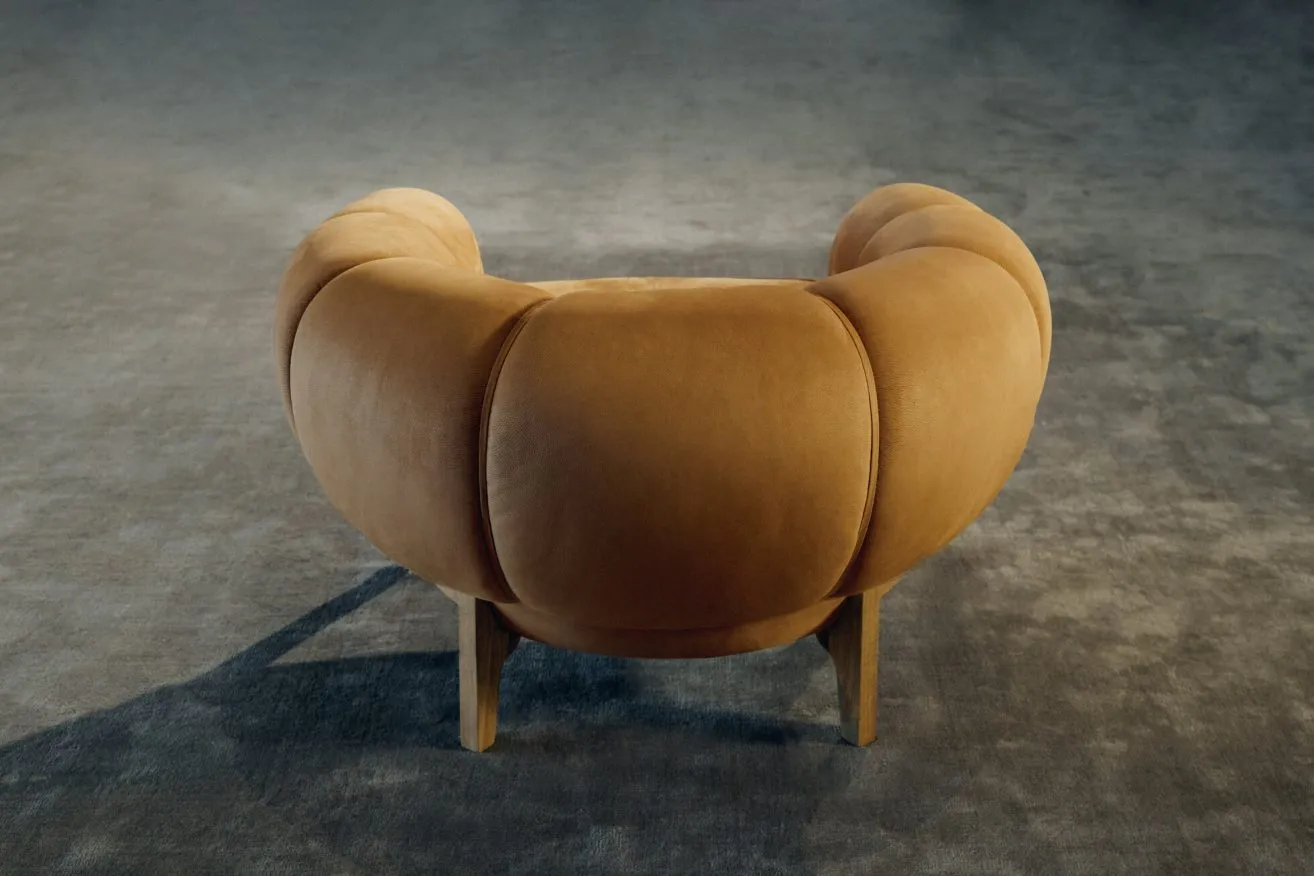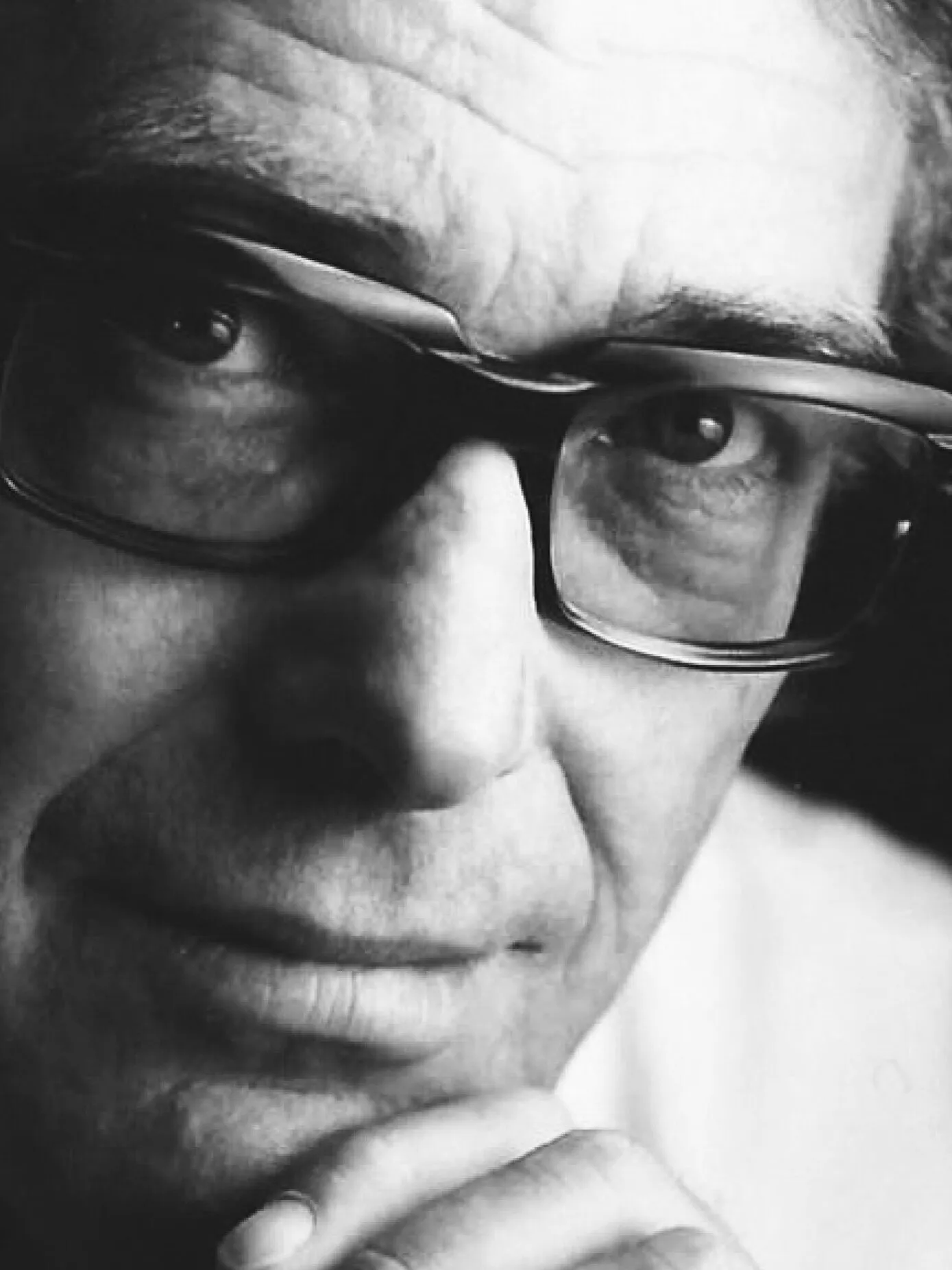“It makes us very happy that GUBI is putting our father’s furniture back into production after all this time. It pleases us and, not least, it would have really pleased our father.”
– Marianne Wikkelsø and Carsten Wikkelsø, Illum Wikkelsø’s daughter and son
A distinctive shape
The Croissant Sofa and Lounge Chair, by midcentury Danish architect and designer Illum Wikkelsø (1919–1999), represent an elegant and playful take on the traditional typology of the Chesterfield sofa and club chair. He redefined these classic pieces for a more relaxed audience emerging in the optimism of the 1960s. The distinctive ‘croissant’ shape reflects the same ingenuity and sense of humor that saw him mount a sail onto his bicycle for speedier travel as a child.

Confident curation
The Croissant Sofa makes a powerful statement as a stand-alone piece, while the Croissant Lounge Chair works well alone or in pairs as ‘fireside chairs’ or in a members’ club, workspace or hotel lobby. Wikkelsø is a new archival designer to the GUBI Collection – his surprising twist on a classic form fits perfectly within GUBI’s confident curation of bold archival and contemporary designs.

A sculptural and dynamic presence
The complex curves required by the playful form of the ‘croissant’ are created with meticulously hand-stitched flat-piping in the fabric editions, and leather piping in the leather versions, honoring Wikkelsø’s legacy as a trained craftsman.

A form of comfort
Wikkelsø believed that furniture should be built to last, to indulge the body and to please the eye. He worked with clean lines, but also had a strong sense of organic expression. His deep understanding of form was coupled with a commitment to exemplary levels of functionality and ergonomics. Having studied under the ‘father of modern Danish design’, Kaare Klint, Wikkelsø always focused on sublime craftsmanship and attention to detail, but also had both the courage and ability to develop his own innovative style.
 Illum Wikkelsø
Illum Wikkelsø
Danish furniture designer Illum Wikkelsø (1919–1999) believed that furniture should be built to last, to indulge the body and to please the eye. He belonged to a group of designers who represented the Golden Age of Danish design during the 1950s and 1960s. With his clear design aesthetic and deep understanding of materials, he was one of the key protagonists to make Danish design style an international phenomenon.
Although Wikkelsø was in many ways in tune with the design aesthetic of his time, he had both the courage and ability to develop his own innovative style which was often expressive and surprising, but always focused on sublime craftsmanship and attention to detail.















 Illum Wikkelsø
Illum Wikkelsø